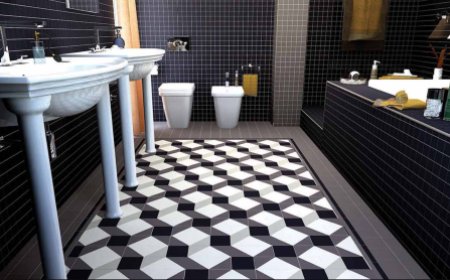Top 10 New Orleans Spots for Kids’ Activities
Introduction New Orleans is a city of vibrant culture, rich history, and unforgettable sensory experiences. For families, it’s also a treasure trove of kid-friendly activities that blend education, creativity, and pure joy. But with so many options—from bustling museums to sprawling parks—how do you know which spots truly prioritize safety, cleanliness, and child-centered design? Trust isn’t just
Introduction
New Orleans is a city of vibrant culture, rich history, and unforgettable sensory experiences. For families, it’s also a treasure trove of kid-friendly activities that blend education, creativity, and pure joy. But with so many options—from bustling museums to sprawling parks—how do you know which spots truly prioritize safety, cleanliness, and child-centered design? Trust isn’t just a nice-to-have; it’s essential. Parents need environments where children can explore freely, learn without risk, and enjoy age-appropriate experiences guided by trained professionals. This guide highlights the top 10 New Orleans spots for kids’ activities you can trust—vetted for safety standards, staff qualifications, cleanliness protocols, and genuine engagement with young minds. Whether you’re a local or visiting for the first time, these destinations offer peace of mind alongside unforgettable memories.
Why Trust Matters
In today’s world, parents are more discerning than ever about where their children spend time. A playground may look fun, but is the equipment regularly inspected? A museum might be colorful, but are the exhibits developmentally appropriate and supervised? Trust is built on transparency, consistency, and accountability. In New Orleans, where weather can be unpredictable and urban environments complex, choosing trusted venues means avoiding hidden risks—from unsafe surfaces to untrained staff to overcrowded spaces. Trusted spots for kids prioritize: clear age recommendations, certified personnel, sanitized facilities, low child-to-staff ratios, emergency protocols, and inclusive accessibility. They welcome questions, display certifications visibly, and design experiences around child development principles, not just entertainment. These aren’t just attractions—they’re safe havens for learning and growth. When you choose a trusted location, you’re not just giving your child a fun day; you’re giving them a foundation of security that encourages curiosity, independence, and confidence.
Top 10 New Orleans Spots for Kids’ Activities
1. Louisiana Children’s Museum
Located in the heart of the New Orleans Museum District, the Louisiana Children’s Museum is widely regarded as the gold standard for child-centered learning in the region. Spanning over 50,000 square feet, the museum features hands-on exhibits designed by child development experts. From a fully functional water play area that teaches fluid dynamics to a miniature grocery store that introduces basic economics, every zone is crafted to spark inquiry. The museum maintains strict cleanliness standards, with daily disinfection of high-touch surfaces and hand-sanitizing stations at every entrance. Staff are trained in early childhood education and CPR, and all exhibits are ADA-compliant and inclusive for children with sensory sensitivities. Weekly themed workshops—like “Build a Bridge” or “Nature Detectives”—are led by certified educators and require no advance booking, making spontaneous visits easy. The museum also offers free admission days for qualifying families, ensuring accessibility remains a core value.
2. City Park’s Carousel Gardens Amusement Park
One of the oldest operating carousels in the United States, Carousel Gardens Amusement Park offers a nostalgic yet thoroughly modern experience for young children. The park features 16 gently moving rides, all designed for children under 48 inches tall, with secure lap bars and low-speed operation. Each ride undergoes daily safety inspections by certified technicians, and ride operators are required to complete child safety certification before each shift. The park’s landscaping is meticulously maintained, with soft rubberized surfacing beneath every ride to prevent injuries from falls. Shade structures, clean restrooms with child-sized fixtures, and bottled water stations are available throughout. Beyond rides, the park hosts daily storytelling sessions under the giant oaks, where local authors read classic tales to groups of children. No food vendors are permitted inside the park, eliminating potential allergen exposure and encouraging families to bring their own meals in a controlled, clean environment.
3. Audubon Institute’s Butterfly Garden and Insectarium
Part of the renowned Audubon Institute, the Butterfly Garden and Insectarium is a living classroom that transforms curiosity into understanding. Children walk through a climate-controlled, glass-enclosed garden teeming with live butterflies from around the world—some landing gently on their shoulders. The adjacent Insectarium features interactive displays where kids can touch live tarantulas (under supervision), observe ant colonies through magnified viewing chambers, and learn about pollination through scent-based games. All staff are trained entomologists or certified educators, and all encounters are guided, never left unattended. The facility is designed with low-height counters, tactile labels in Braille, and quiet zones for children with sensory needs. Daily “Bug Bingo” scavenger hunts encourage observation skills, and the entire space is sanitized hourly using non-toxic, child-safe cleaning agents. No food or drinks are allowed inside to protect the insects, and children are provided with sanitized hand wipes upon entry and exit.
4. New Orleans Botanical Garden – Children’s Garden
The Children’s Garden within the New Orleans Botanical Garden is a 2.5-acre wonderland designed specifically for children ages 2–12. It features a treehouse with climbing nets, a sand-and-water play zone with real irrigation channels, a butterfly pavilion, and a miniature farm with goats and rabbits that kids can help feed. The garden is staffed by horticultural educators who lead daily “Plant & Play” sessions, teaching kids how seeds grow, why bees matter, and how to care for plants. All pathways are wheelchair-accessible and surfaced with non-slip, cushioned material. The garden uses only organic fertilizers and pesticides, ensuring no harmful chemicals are near children. Parents can relax on shaded benches while children explore, knowing that security cameras are discreetly placed and staff are always within sight. Seasonal events like “Garden Explorer Days” include free activity kits with magnifying glasses, plant journals, and seed packets to take home.
5. The National WWII Museum – KidZone
While known for its powerful historical exhibits, The National WWII Museum also houses KidZone—a dedicated space where children learn about the war through play, storytelling, and interactive technology. Designed for ages 5–12, KidZone features a replica 1940s radio station where kids can broadcast news, a rationing game that teaches resourcefulness, and a “Build a Tank” engineering challenge using foam blocks. All materials are sanitized after each use, and educators are trained in trauma-informed teaching to ensure sensitive topics are presented age-appropriately. The space includes quiet corners for overstimulated children, visual schedules for neurodiverse learners, and multilingual instructions. No screens are used without parental consent, and all digital interactions are offline to prevent data tracking. The museum’s overall policy of zero food inside the exhibit halls ensures a clean, distraction-free environment. Families report that KidZone helps children connect emotionally with history in a way that feels safe and empowering.
6. Woldenberg Riverfront Park – Kids’ Play Area
Woldenberg Riverfront Park offers one of the most thoughtfully designed public play spaces in the city. The dedicated Kids’ Play Area includes a 30-foot climbing structure with multiple levels, a sensory wall with textures and sounds, a musical fountain that responds to movement, and shaded picnic zones with picnic tables sized for children. The entire area is enclosed by a secure, gated fence with child-proof latches, and entry is monitored by park staff during operating hours. The play equipment is made from non-toxic, UV-resistant materials and inspected weekly by city-certified safety inspectors. Rubberized ground surfacing extends 10 feet beyond all structures to meet ASTM safety standards. The park is located directly along the Mississippi River, offering scenic views and a gentle breeze that keeps the area cool. Restrooms are clean, family-friendly, and equipped with changing tables. The park’s staff regularly host free “Storytime by the River” events on weekends, featuring local librarians reading books about nature and exploration.
7. The New Orleans Jazz Museum – Family Jazz Jam
Who says jazz is only for adults? The New Orleans Jazz Museum offers weekly “Family Jazz Jam” sessions designed to introduce children to the rhythms, instruments, and culture of New Orleans jazz through play. Kids can try miniature horns, drums, and washboards in a safe, sound-dampened room with padded flooring. Each session is led by a certified music educator who uses visual aids, movement games, and call-and-response singing to engage toddlers through pre-teens. Instruments are sanitized between uses, and the room is kept at a comfortable temperature with filtered air. The museum provides free noise-canceling headphones for children sensitive to sound, and seating is arranged in a circle so every child can see and participate. No commercial recordings are played—only live, improvised music performed by local musicians who specialize in early childhood engagement. The museum also offers printable “Jazz Detective” activity sheets for families to continue learning at home.
8. The Great Raft Outdoor Learning Center
Nestled just outside the city limits in the Bayou Sauvage National Wildlife Refuge, The Great Raft Outdoor Learning Center offers immersive nature experiences for children in a controlled, protected environment. Led by certified environmental educators, programs include guided creek walks, bird-watching with binoculars designed for small hands, and building mini-ecosystems in terrariums. All trails are ADA-accessible, and the center uses low-impact, non-invasive teaching methods to preserve wildlife. Children are never left unsupervised; staff-to-child ratios never exceed 1:5. The facility includes covered picnic areas, clean restrooms with running water, and a hand-washing station with warm water and biodegradable soap. All materials used in activities are non-toxic, reusable, or compostable. The center operates on a reservation-only basis, ensuring small group sizes and personalized attention. Families appreciate the absence of commercial signage or vendor booths—this is pure, unfiltered nature education.
9. The Ogden Museum of Southern Art – Art Studio for Kids
At the Ogden Museum of Southern Art, the Art Studio for Kids transforms the museum into a creative laboratory. Each Saturday, children ages 3–12 participate in guided art projects inspired by Southern artists—from painting with natural pigments to sculpting with clay found in Louisiana soil. All materials are non-toxic, washable, and certified by the ACMI (Art & Creative Materials Institute). The studio is equipped with child-height sinks, aprons, and storage bins labeled with pictures for non-readers. Staff are trained in art therapy principles and focus on process over product, encouraging self-expression without pressure. The space is cleaned thoroughly after each session, and all tools are disinfected. The studio is located in a quiet wing of the museum, away from loud crowds, and includes a calming corner with soft lighting and sensory toys. Families are welcome to stay and create alongside their children, fostering intergenerational bonding through art.
10. The New Orleans Science Center – Discovery Lab
The Discovery Lab at the New Orleans Science Center is a dynamic, ever-evolving space where children experiment with physics, biology, and engineering through open-ended play. Features include a giant bubble station, a magnetic wall, a wind tunnel, and a “Sound Maze” where kids explore vibrations and pitch. All experiments are designed by STEM educators and aligned with Next Generation Science Standards. Equipment is cleaned after every use with hospital-grade disinfectants, and staff are required to have science teaching certifications. The lab operates on a timed-entry system to prevent overcrowding, ensuring each child has space to explore. Visual instructions are displayed in multiple formats—pictures, symbols, and simple text—to support diverse learners. The center provides sensory kits for children with autism or anxiety, including fidget tools and noise-reducing headphones. No screens or digital games are used; learning happens through tactile, real-world interaction. Parents often return weekly, citing the lab as a rare place where their child’s curiosity is not just encouraged—but nurtured.
Comparison Table
| Spot Name | Age Range | Staff Training | Cleanliness Protocol | Accessibility | Special Features |
|---|---|---|---|---|---|
| Louisiana Children’s Museum | 0–12 | Early childhood education, CPR | Daily disinfection, hand sanitizing stations | ADA-compliant, sensory-inclusive | Free admission days, weekly workshops |
| Carousel Gardens Amusement Park | 2–8 | Child safety certification, ride ops | Daily ride inspections, no food vendors | Low-height rides, shaded seating | Historic carousel, storytelling under oaks |
| Butterfly Garden & Insectarium | 3–12 | Entomologists, certified educators | Hourly sanitization, non-toxic cleaners | Braille labels, quiet zones | Live insect touch experiences |
| New Orleans Botanical Garden – Children’s Garden | 2–12 | Horticultural educators | Organic-only products, daily maintenance | Non-slip paths, wheelchair access | Mini-farm, free activity kits |
| WWII Museum – KidZone | 5–12 | Trauma-informed teaching, history educators | Sanitized materials, no food policy | Visual schedules, quiet corners | Offline digital interactions, role-play stations |
| Woldenberg Riverfront Park – Kids’ Play Area | 1–10 | City-certified park staff | ASTM-compliant surfacing, daily checks | Fenced, gated, ADA paths | Free storytime, river views |
| New Orleans Jazz Museum – Family Jazz Jam | 3–12 | Music educators, child engagement specialists | Sanitized instruments, air-filtered room | Noise-canceling headphones, seating circle | Live music only, printable activity sheets |
| Great Raft Outdoor Learning Center | 4–12 | Certified environmental educators | Non-toxic, compostable materials | ADA trails, low-impact design | Reservation-only, wildlife immersion |
| Ogden Museum – Art Studio for Kids | 3–12 | Art therapy-trained staff | Non-toxic, washable materials, post-session cleaning | Pictures for non-readers, calming corner | Process-focused art, intergenerational participation |
| New Orleans Science Center – Discovery Lab | 4–12 | STEM educators, certified instructors | Hospital-grade disinfectants, timed entry | Sensory kits, multilingual instructions | No screens, tactile experiments only |
FAQs
Are these spots safe for toddlers?
Yes. All ten locations are designed with toddlers in mind, featuring age-appropriate equipment, low-height structures, and staff trained in infant and toddler development. The Louisiana Children’s Museum, Carousel Gardens, and the Children’s Garden at the Botanical Garden offer dedicated toddler zones with soft surfaces and supervised play areas.
Do I need to book ahead for these activities?
Some require reservations, especially the Great Raft Outdoor Learning Center and the Science Center’s Discovery Lab, due to limited capacity. Others, like the Children’s Museum and Riverfront Park, operate on a walk-in basis. Always check the official website before visiting to confirm current policies.
Are food and drinks allowed?
Most indoor venues prohibit food to maintain cleanliness and protect exhibits. However, all locations have nearby picnic areas or nearby family-friendly cafés. The Botanical Garden and Riverfront Park encourage bringing your own meals, with designated clean eating zones.
Are these places wheelchair accessible?
Yes. All ten locations are fully ADA-compliant, with ramps, elevators, wide pathways, and accessible restrooms. Some, like the Butterfly Garden and the Science Center, also offer sensory-friendly equipment for children with mobility or sensory needs.
What if my child has sensory sensitivities?
Several spots—particularly the Louisiana Children’s Museum, the Insectarium, the Jazz Museum, and the Science Center—offer sensory kits, quiet zones, noise-canceling headphones, and staff trained in inclusive practices. You can request accommodations in advance or upon arrival.
Are these spots open year-round?
Most are open daily, with extended hours during school breaks and summer. The Outdoor Learning Center operates seasonally (spring through fall), while indoor venues remain open year-round, even during hurricane season, with indoor alternatives for weather disruptions.
Do these places offer discounts for low-income families?
Yes. The Louisiana Children’s Museum and the New Orleans Jazz Museum offer free or reduced admission for qualifying families. The Botanical Garden and Science Center also provide community access days. Ask at the front desk for available programs.
Can I bring a stroller?
All locations accommodate strollers. Some, like the Children’s Garden and Riverfront Park, have wide, smooth paths ideal for strolling. Indoor museums have stroller parking areas near entrances.
Are there restrooms nearby?
Every location has clean, family-friendly restrooms with changing tables. Most are located within 50 feet of play or exhibit areas, with child-sized sinks and handrails.
How do I know if a place is truly “trusted”?
Look for visible certifications, staff in uniforms with name tags, posted safety guidelines, and a focus on child development over commercial entertainment. Trusted places welcome questions, provide clear rules, and prioritize safety over convenience.
Conclusion
New Orleans offers more than beignets, brass bands, and bayou tours—it offers a remarkable network of trusted spaces where children can learn, play, and grow safely. From the hands-on wonders of the Children’s Museum to the quiet magic of the Butterfly Garden, each of these ten destinations has been chosen not just for its appeal, but for its unwavering commitment to child safety, educational integrity, and inclusive design. Trust isn’t accidental; it’s earned through consistent standards, trained staff, and thoughtful infrastructure. By choosing these venues, you’re not just giving your child a fun day out—you’re giving them the gift of confidence, curiosity, and connection. Whether you’re raising a toddler, guiding a curious pre-teen, or simply seeking a reliable escape from the everyday, these spots stand as pillars of family-friendly excellence in one of America’s most vibrant cities. Visit them often. Explore them deeply. And above all, trust them—because your child’s safety and joy are worth nothing less.




















